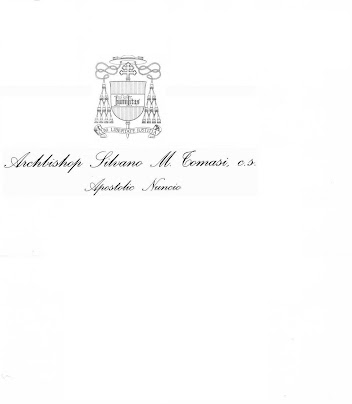Statement by H.E. Archbishop Silvano M. Tomasi, Permanent Representative of the
Holy See to the United Nations and Other International Organizations in Geneva
at the Annual full-day meeting on the Rights of the Child of the
13th Session of the Human Rights Council:
The fight against sexual violence against children
Geneva, 10th March 2010
Mr. President,
“Sexual abuse of minors is always a heinous crime”. To this unambiguous condemnation of sexual violence against children and young people, the Holy Father Pope Benedict XVI has added the religious dimension, pointing out that it is also a "grave sin" that offends God and human dignity. The child's physical and psychological integrity is violated with destructive consequences. Studies have shown that abused children react in different ways to sexual violence and have a higher likelihood of teen pregnancy, homelessness, risk of drug and alcohol dependence. In a word, the evil committed against these little ones often stigmatizes them for their entire life.
As you are aware, in the last years, Catholic clergy, religious and lay workers in a number of countries have been accused , and several have been convicted, of child abuse. There is no excuse for this behavior, which is a grave betrayal of trust. In some cases heavy fines had to be paid while in other cases the culprits were given custodial sentences. Protection from sexual aggression remains high on the agenda of all church institutions as they struggle to come to terms with this serious problem. Likewise, concrete measures to ensure transparency and assistance to the victims and their families are the way to alleviate the pain, grief, and bewilderment caused by the abuse that has occurred.
The Catholic community continues its efforts to deal decisively with this problem. Thus, those who are found guilty of these crimes are immediately suspended from exercising their office and are dealt with according to the norms of civil and canon laws. Other legal measures have been taken in order to ensure that children and young people cared for in schools and institutions are safe. Many of the measures taken, legal or administrative, deal with recognition and punishment of abuse. Prevention is the best medicine, and this begins with education and promoting a culture of respect of the human rights and human dignity of every child, and especially through the implementation of efficient methods for the recruitment of school personnel.
Could the panel share some best practices that can help children to recognize and report the improper behavior of educators and caregivers?
Stemma Episcopale

Questo e lo Stemma Episcopale del ArciVescovo Mons. Silvano Maria Tomasi, missionario Scalabriniano. Lo stemma ricorda il patrono della congeregazione Scalabriniana voluto dal Beato G.B. Scalabrini, San Carlo Borremeo nel suo stemma ce questa scritta Humilitas.
giovedì 11 marzo 2010
Iscriviti a:
Commenti (Atom)
